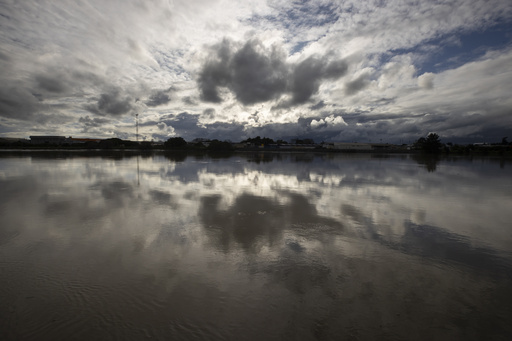
WELLINGTON, New Zealand — On Thursday, New Zealand passed a new law granting personhood to a significant mountain revered by the Indigenous M?ori people. Mount Taranaki, which is also known by its M?ori name, Taranaki Maunga, will now be recognized as having the same rights and responsibilities as a human being. This landmark legislation marks it as the latest natural feature in New Zealand to receive similar recognition, following prior acknowledgments for a river and a sacred land site.
Standing at 2,518 meters (8,261 feet), Taranaki Maunga is the second-highest mountain on New Zealand’s North Island and is popular for activities like tourism, hiking, and winter sports. The legal acknowledgment serves as a recognition of the historical injustices faced by the M?ori of the Taranaki region after colonization, addressing the grievances regarding the mountain’s appropriation. It aligns with a government agreement to compensate Indigenous peoples for the harms inflicted upon their lands.
What does it mean for a mountain to be granted personhood? The newly enacted law confers upon Taranaki Maunga all the rights, powers, duties, responsibilities, and potential liabilities attributed to a person. Referring to this legal personality as Te K?hui Tupua, the law describes it as “a living and indivisible whole,” which encompasses both the mountain and its surrounding landscape, incorporating both physical and spiritual dimensions.
To represent the mountain, a newly established entity comprising four members from local M?ori iwi and four appointed by the country’s Conservation Minister will act as its “face and voice” according to the law.
The significant cultural importance of Taranaki Maunga cannot be understated. The mountain has long been viewed as an ancestor and a critical source of sustenance for the M?ori people. Paul Goldsmith, the lawmaker overseeing the settlements between the government and the M?ori tribes, emphasized its historical importance in a parliamentary address on Thursday.
Historically, the mountain was stripped from the M?ori during the 18th and 19th centuries under colonial rule. In 1770, British explorer Captain James Cook named the mountain Mount Egmont after viewing it from his ship. Later, in 1840, the Treaty of Waitangi, which serves as New Zealand’s foundational document, was signed between M?ori tribes and representatives of the British Crown. However, discrepancies between the M?ori and English versions of the treaty led to numerous breaches, undermining M?ori rights to their lands.
In 1865, vast lands in Taranaki, including the mountain, were confiscated as punishment against M?ori for resisting the Crown. For the following century, decisions regarding the mountain were made by hunting and sporting groups, sidelining M?ori voices. Goldsmith noted that traditional M?ori practices associated with the mountain had been prohibited while tourism was promoted instead. Nonetheless, a 1970s and ’80s M?ori protest movement initiated a renewed recognition and respect for M?ori language, culture, and rights within the legal framework of New Zealand.
Redress efforts have resulted in substantial settlements from the Treaty of Waitangi, including an agreement made in 2023 with the eight Taranaki tribes.
What implications does this legal recognition have for Taranaki Maunga? Debbie Ngarewa-Packer, a co-leader of the political party Te P?ti M?ori and a descendant of the Taranaki tribes, expressed hope as she noted, “Today, Taranaki, our maunga, our maunga tupuna, is released from the shackles of injustice, ignorance, and hate.” The granted rights aim to preserve the health and well-being of the mountain, enabling conservation initiatives and allowing for the revival of traditional practices, while still ensuring public access.
New Zealand has led the world in recognizing natural features as legal entities; in 2014, it was the first country to grant personhood to Te Urewera, a large native forest on the North Island, and followed this by recognizing the Whanganui River as a legal person as part of a settlement with its local iwi in 2017.
The legislation declaring Taranaki Maunga a legal person received unanimous support from all 123 members of Parliament. The vote was celebrated with a traditional waiata (M?ori song) sung by a crowd from Taranaki visiting the parliamentary gallery. This moment of unity arrived amidst ongoing tensions regarding race relations in New Zealand, as many have recently protested a proposed law that could redefine the Treaty of Waitangi in a way that detractors claim would undermine M?ori rights and achievements made over the last 50 years.

